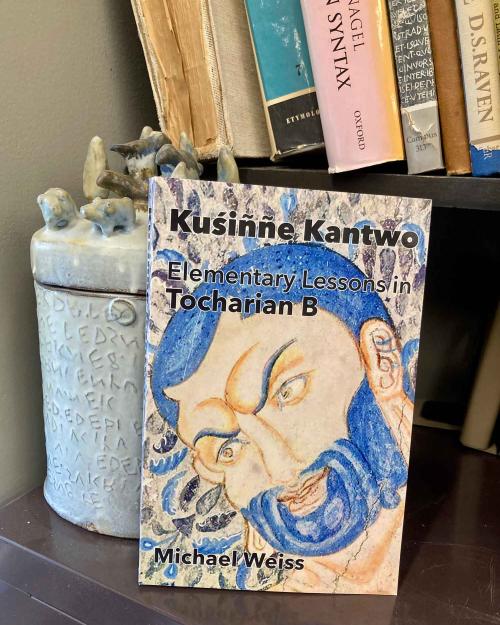A new book by linguist Michael Weiss provides the first pedagogical grammar ever compiled for Tocharian B, an ancient Indo-European language that was spoken and written in parts of what is now the Tarim Basin of western China.
The texts that Weiss, a professor in the Department of Linguistics in the College of Arts and Sciences, used as the basis for his grammar, “Kuśiññe Kantwo: Elementary Lessons in Tocharian B,” date from the 5th to 10th centuries, but weren’t discovered until the early 1900s.
“This is one of the 10 branches of Indo-European, so it’s quite important for the study of historical linguistics and the history of the Indo-European languages,” Weiss said. “There have been scholarly presentations of the grammar of Tocharian B, but there was no textbook to learn it.”
Before this new textbook, students who wanted to learn the language needed to find an expert to guide them through the texts, he said. Weiss teaches a class on the language every five years or so, but there are maybe only two other universities in the U.S. where the language is offered, he said.
Many of the Tocharian B texts that have been discovered are Buddhist religious texts, so they are “high-minded and philosophical,” with scant information about everyday life, Weiss said. But scholars have also found other documents — caravan passes from the Silk Road, economic documents from Buddhist monasteries and a famous love poem — that have helped fill in some missing vocabulary.
With such a limited corpus of texts – about 8,600 in total in Tocharian B, but many are fragmentary – scholars have pieced together their knowledge of the language. For example, if they know the first and third person forms of ‘love’, (I love, (s)he loves) they can deduce the second person form (you love) from their knowledge of the patterns of verbs in the language, Weiss said.
The language is now extinct, with scholars surmising that it was eventually supplanted by the Uyghur language.
“It’s surprising to find an Indo-European language so far East so how Tocharian ended up in the Tarim basin is one of the essential questions we are interested in answering,” Weiss said. “Although the language isn’t related to Chinese, it’s been influenced by Chinese and has had some influence on Chinese.”
The Chinese word for “honey,” for example, can be traced to Tocharian B, which also has a number of words from Chinese.
The language is important linguistically because as a separate branch of the family it belongs to, it contributes unique evidence to scholars’ understanding about what the ancestor language would have been like, Weiss said.
“It’s also important culturally because the Tocharians were probably one of the main vectors of the transfer of Buddhism from India to China, “ Weiss said.






